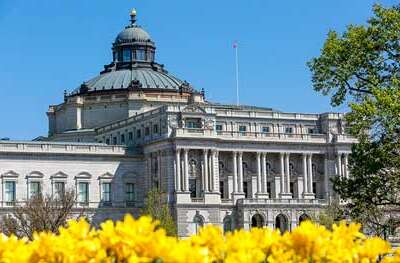
Feeling cooped up? The Federal Highway Administration may have just the remedy
The National Scenic Byways Program can tell you about some of the best drives to take near you. For more about the program, Federal Highway Administration...
Best listening experience is on Chrome, Firefox or Safari. Subscribe to Federal Drive’s daily audio interviews on Apple Podcasts or PodcastOne.
If you’re getting a bit of cabin fever during the pandemic and just want to get out and go, a recently relaunched program of the Federal Highway Administration could help. The National Scenic Byways Program can tell you about some of the best drives to take near you. For more about the program, Federal Drive with Tom Temin‘s Eric White spoke to FHWA spokesman Doug Hecox.
Interview transcript:
Doug Hecox: The National Scenic Byways Program is something that the United States Department of Transportation has been operating for a couple of decades, maybe even three, as a way to celebrate some of the routes that actually make America America. There’s a long standing belief among some circles, beginning probably back in the 50s, that interstates and all the long standing approaches to connecting big cities with each other made it possible for you to travel from one city to another or from one coast to the other, and never really seeing America. And the Scenic Byways Program is the opposite of that. It’s a celebration of these smaller routes that take you through areas of the country that really are special, that are unique, that are especially scenic, that have an archetype, archaeological or historical, poignant about them, drives that will make you happier at the end. And that’s what we do. And so every few years we add a few new scenic byways in all American roads to the collection. We almost have 200 now, so we’re getting close. But there really is something for everybody here. And with the coronavirus in the health concerns of the country right now, it makes it a little bit more difficult for folks to travel. But I know everybody’s getting cabin fever these days. And so if you’re eager to get out of the house and go see something that might be outside your back door, I invite you to check out the scenic byways website, on our website. And obviously here at the Federal News Network, you’ve got that too. But we want people to see what they have nearby. You don’t even have to get out of your car, you can just get out of the house. And it’s a great way to feel better about the country.
Eric White: Certainly sounds nice. Tell me a little bit about the history of the program. How long’s it been going for? And if you know, and I don’t know if it proceeds your time at the transportation department. But what was kind of the thinking behind it?
Doug Hecox: Well, it’s a couple of things. I know that as I explained, there are some folks that believe the interstate takes people out of America. You’re driving on this big ribbon of uninterrupted blacktop with exit signs and on ramps, and that’s about it. And someone many years ago, I’m betting It was probably in the early 1990s. Someone realized there’s probably value in preserving and kind of highlighting special routes along the American road system, not interstates, but these smaller roads that take you through smaller communities or places that have real special heritage or something that makes them unique. That’s the one problem with the interstate is that everything looks alike from the from the interstate. But these little smaller routes take you into the different chapters of the American story. Whether they be colonial age, settlements, or ongoing issues with scenery and foliage, fall foliage. The skyline drive in Virginia is a great example of that where people drive just to be mesmerized by the beauty. And I think we’ve lost sight of the importance of that.
Eric White: You said you’re up to almost 200 now. What is the selection process like? Are you one of the lucky individuals that gets to go out? Or is it a submitted by just average citizens who think this is a great route?
Doug Hecox: It’s the second thing. Yeah, I wish I could be part of the judging panel because it’d be great fun to look at all the material that comes in. But these are all locally sponsored and locally nominated routes. And there are some criteria that we look at. We want to make sure that these special pathways or these byways meet all of the following. And this is going to sound a little governmental, so I apologize. But we want scenic byways to reflect archaeological, cultural, historic, natural, recreational or other scenic qualities that you can’t find anywhere else. So we’re really looking for something truly special. And the beauty of this inventory of special byways that we have so far is that they do run the entire table of choices. We have some that reflect Native American traditions and heritages. We have some that reflect cowboys and the the golden age of the West with the Billy the Kid trail and things like that. We’ve got others that reflect just pure scenery as I mentioned, the skyline drive in Virginia, but there’s also Chesapeake country scenic byway here in the Maryland area just outside of DC. It takes drivers up and around the Chesapeake Bay. So when communities get together, and they’re actively trying to show their pride and their little piece of the American story, it’s very competitive. It’s surprisingly competitive because there’s so many great places and special magical locations. So we want people to be aware of and sometimes it’s hard to know what you’re missing when you’re on the interstate. So that’s what these routes do is they give people a reason to get off the interstate and see how the other half live and really appreciate America in a more colorful way.
Eric White: You said it gets competitive. Are they competing for any particular money or anything? Or is it just the pride of having a National Scenic Byway run through their town?
Doug Hecox: It’s a little of both. In years past, there were some funds available to help with maintenance and signage and some of the things that make these routes a little more distinctive. And then the program wasn’t renewed, we’re not real sure quite what happened, but Congress didn’t renew it about 10 years ago. And so just in the past two years, it was restarted. And so January of this year, we introduced the latest additions, which got us again, almost up to 200. We introduced 48 new scenic byways on all American roads to our collection. And once we had that announcement made, now we are beginning the work of soliciting for the next round, and there will be more funding available for those at that time. So the last group had no funds available, but the new and subsequent rounds of applicants, there will be some funding available for them. So it’s not clear how much each will receive or that sort of thing. But we do know there’s a lot of local pride on the line. And we’re happy to see it. It’s great when there’s so many Americans so proud of their area, and we want to highlight as much as we can.
Eric White: Speaking of your website that you were talking about earlier, it’s kind of one of the cool things that you can do on it is you can almost plan out a route. And it’ll take you through different byways that you don’t have to necessarily go across the country on one of these routes. But you can maybe stop off and take a little detour to kind of just check out the area that you’re driving through.
Doug Hecox: Yeah, that’s absolutely right. And again, we encourage you to to check out our website, and it’s going to have a little very easy to use map and you can click on any of the little dots near where you are or plan to be and get a sense of what’s available to explore. That’s really all we’re encouraging people to do is just go explore, see what there is and there diverse. That’s really the great thing about it, they’re not all the same. Some of them are scenic kind of very traditionally nature oriented like forests and big valleys or the Grand Canyon, some natural wonders that are incredible. Others take you through more of a historical journeys such as some of the stuff in Virginia, that colonial Parkway, for example, 23 mile long ribbon through history, which connects drivers with early America. It connects Jamestown, Williamsburg and Yorktown some of the oldest communities in the country. And it’s a very pretty drive, it’s a sightseeing paradise.
Eric White: Feet to the fire moment of the interview. Have you personally ridden on any of these byways? And if you have, is there a favorite of yours or anything like that?
Doug Hecox: I’m actually very familiar with these. And while I haven’t ridden or driven on all of them. Yes, I’m very familiar with the skyline drive I’ve mentioned that, it’s great in the fall. Skyline drive in Virginia is just this firestorm of fall colors. It’s just this see the symphony of reds and oranges and yellows and it’s just really an incredible drive. And everybody in the DC area knows about it. So the traffic during the fall foliage season is is a little heavier than it ought to be. But there are other places too. One in Nevada is called Pyramid Lake, the Pyramid Lake Scenic Byway. It’s a trip through one of the maybe the only desert lakes in the United States. It’s one of the world’s largest desert lakes, but it’s literally a lake in the middle of a desert. And it’s landlocked, it can’t go anywhere. And its colors change depending on the light. Sometimes it’s green, sometimes it’s turquoise, sometimes it’s blue, and it’s got little natural rock formations around it that look like pyramids. I mean, it’s just a weird, very exotic place to be and it’s just really, really powerful. And Red Rock Scenic Byway down near Sedona in Arizona is another one. It’ll take drivers on this big tour of the high deserts, really stunning and world famous Red Rocks. These big, very colorful, impressive rock formations. That’s my jam, that’s one of my favorite parts of the country and I never get enough of that kind of scenery. So it’s a a great drive and I encourage people to check it out. But find what works for you. Take a look at the website and explore. We want you to go see the world and begin with the United States.
Copyright © 2024 Federal News Network. All rights reserved. This website is not intended for users located within the European Economic Area.
Tom Temin is host of the Federal Drive and has been providing insight on federal technology and management issues for more than 30 years.
Follow @tteminWFED
Related Stories





